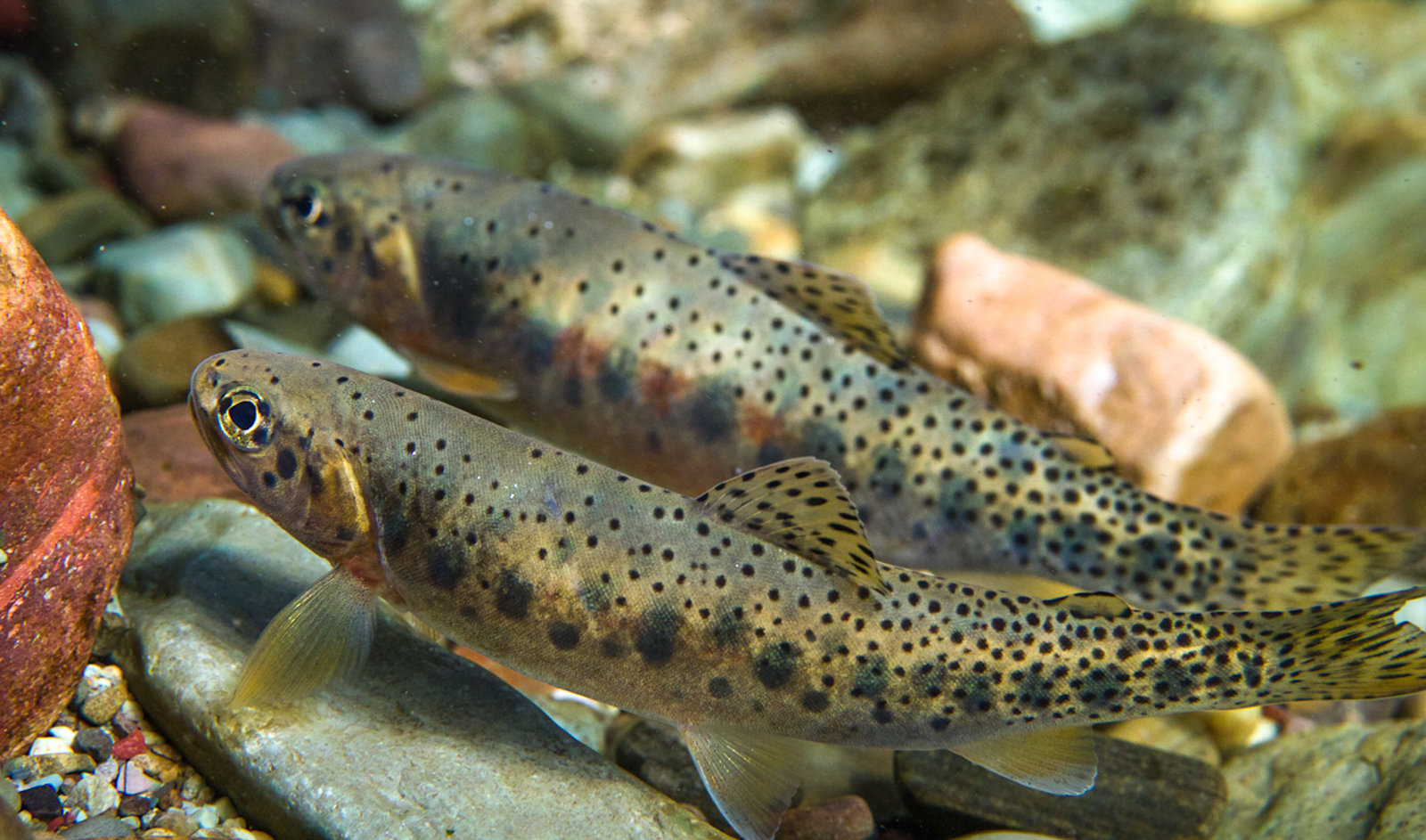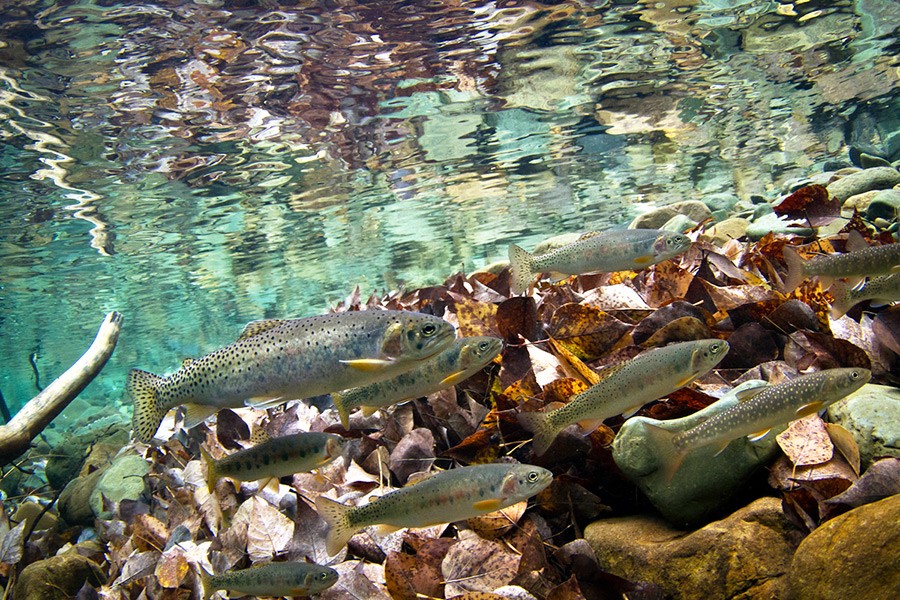
FWP fisheries biologists received well-deserved recognition for their efforts to restore the cutthroat trout population in the South Fork Flathead drainage . . .
The largest conservation project in the country aimed at restoring native westslope cutthroat trout has successfully reached its conclusion in the region, replenishing the waters of the South Fork Flathead River drainage upstream of Hungry Horse Dam with genetically pure populations of Montana’s state fish.
In doing so, the architects of the project, a band of dedicated state fisheries experts from the region, earned high honors from Montana’s governor, who this summer had occasion to ply some of the alpine lakes that now contain biologically superior populations of cutthroat.
On Sept. 25, Gov. Steve Bullock presented the Award for Excellence to Montana Fish Wildlife and Park’s Region One fisheries crew for their efforts to protect Montana’s last best stronghold for westslope cutthroat, a massive undertaking that began a decade ago under a cloud of controversy but emerged a resounding success.

